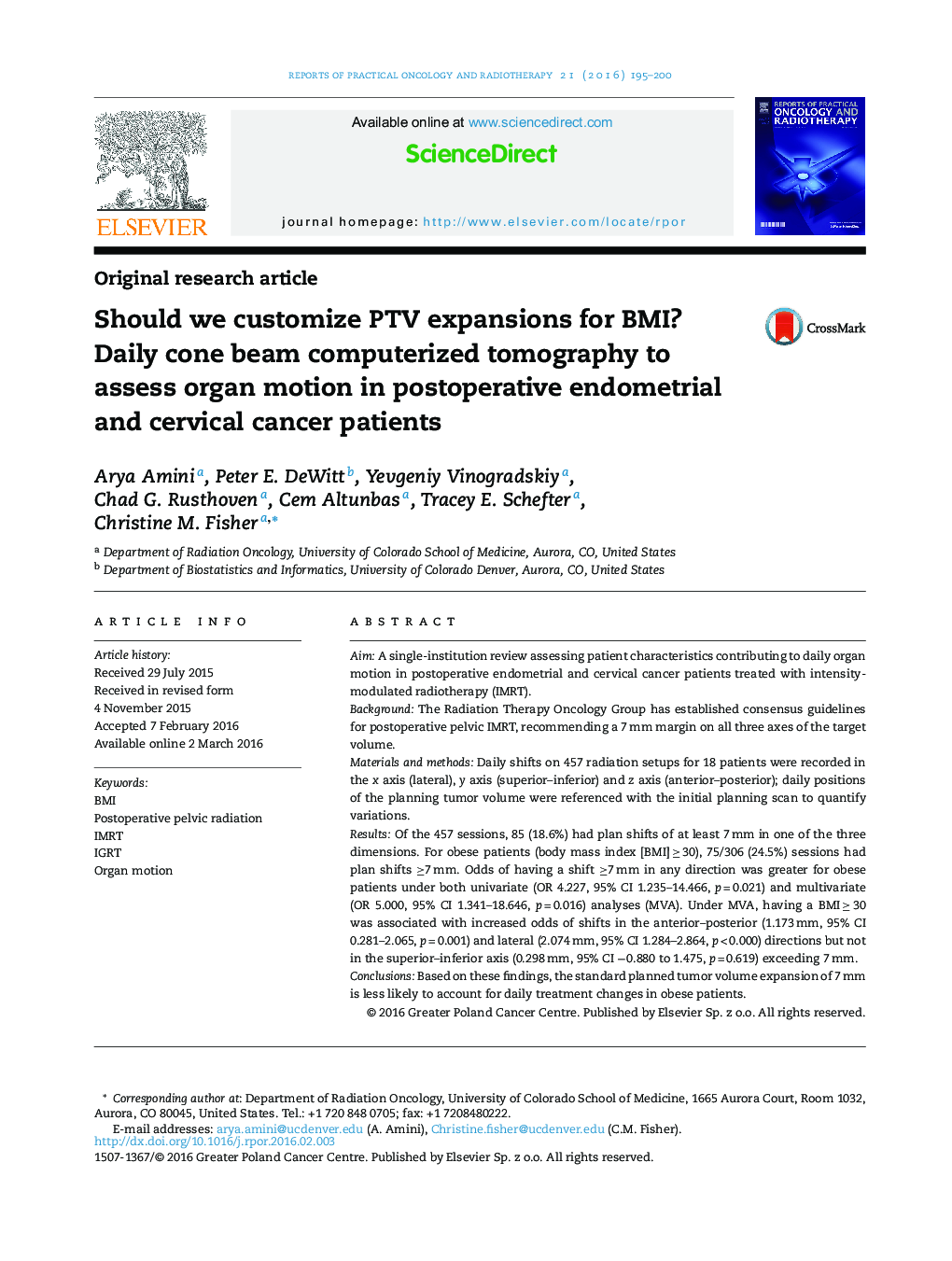| Article ID | Journal | Published Year | Pages | File Type |
|---|---|---|---|---|
| 1855530 | Reports of Practical Oncology & Radiotherapy | 2016 | 6 Pages |
AimA single-institution review assessing patient characteristics contributing to daily organ motion in postoperative endometrial and cervical cancer patients treated with intensity-modulated radiotherapy (IMRT).BackgroundThe Radiation Therapy Oncology Group has established consensus guidelines for postoperative pelvic IMRT, recommending a 7 mm margin on all three axes of the target volume.Materials and methodsDaily shifts on 457 radiation setups for 18 patients were recorded in the x axis (lateral), y axis (superior–inferior) and z axis (anterior–posterior); daily positions of the planning tumor volume were referenced with the initial planning scan to quantify variations.ResultsOf the 457 sessions, 85 (18.6%) had plan shifts of at least 7 mm in one of the three dimensions. For obese patients (body mass index [BMI] ≥ 30), 75/306 (24.5%) sessions had plan shifts ≥7 mm. Odds of having a shift ≥7 mm in any direction was greater for obese patients under both univariate (OR 4.227, 95% CI 1.235–14.466, p = 0.021) and multivariate (OR 5.000, 95% CI 1.341–18.646, p = 0.016) analyses (MVA). Under MVA, having a BMI ≥ 30 was associated with increased odds of shifts in the anterior–posterior (1.173 mm, 95% CI 0.281–2.065, p = 0.001) and lateral (2.074 mm, 95% CI 1.284–2.864, p < 0.000) directions but not in the superior–inferior axis (0.298 mm, 95% CI −0.880 to 1.475, p = 0.619) exceeding 7 mm.ConclusionsBased on these findings, the standard planned tumor volume expansion of 7 mm is less likely to account for daily treatment changes in obese patients.
